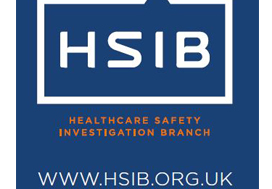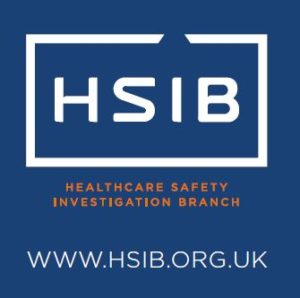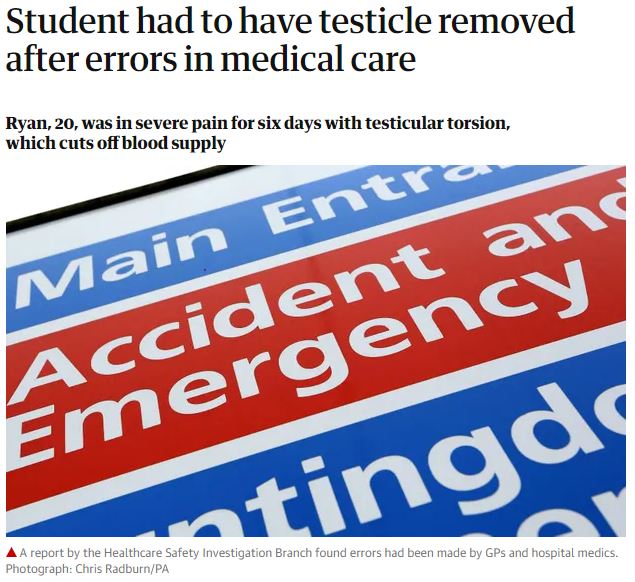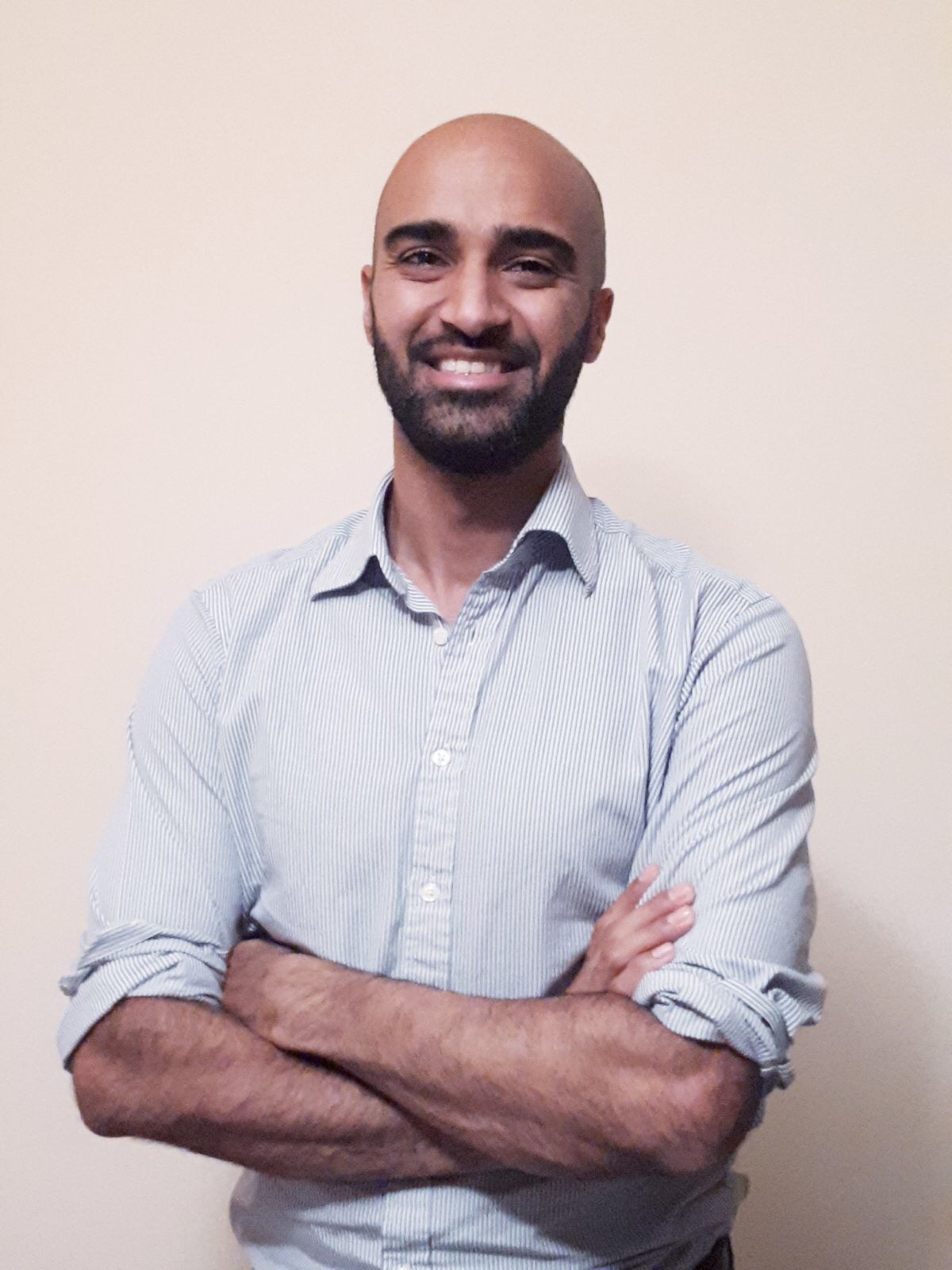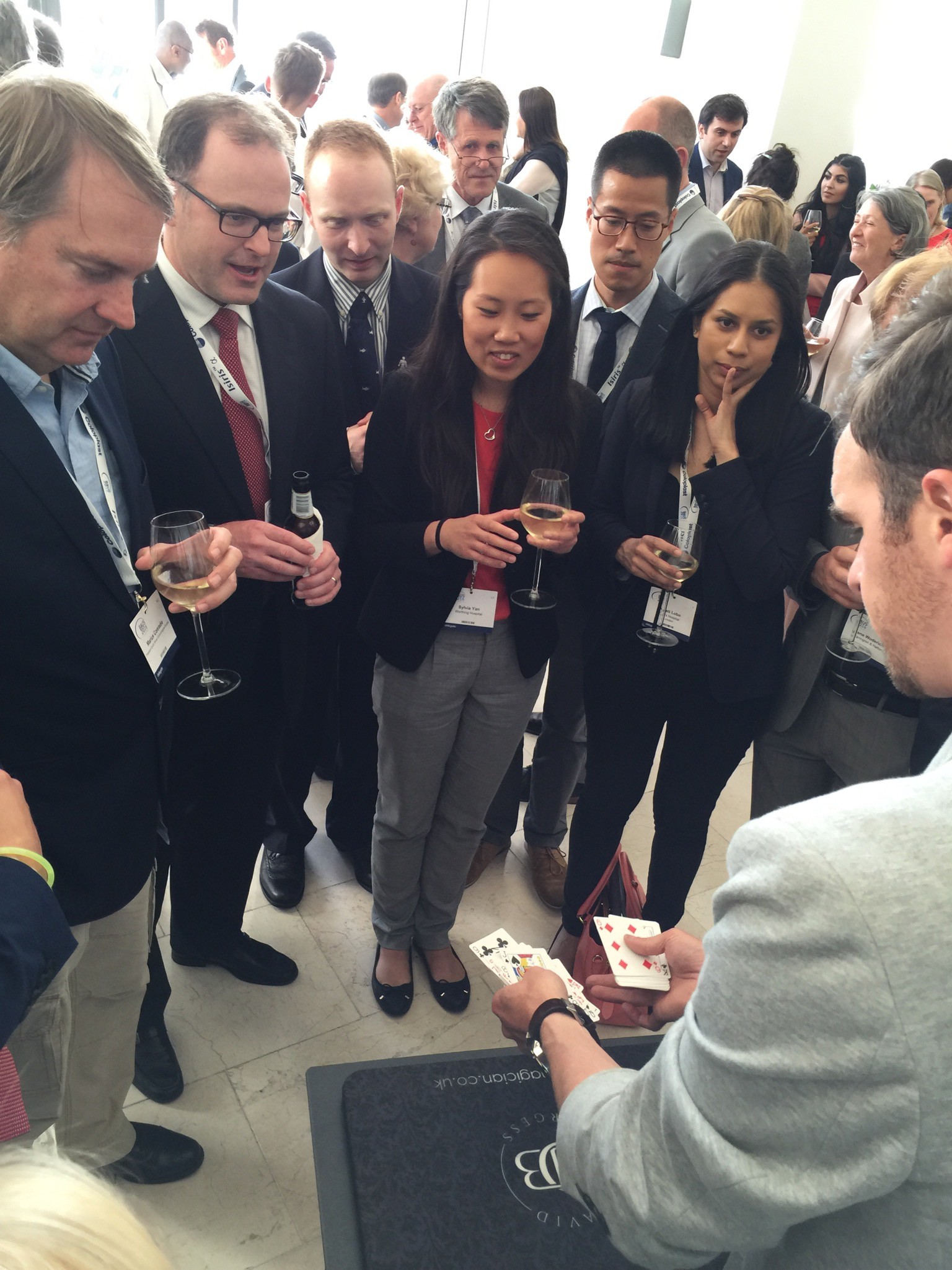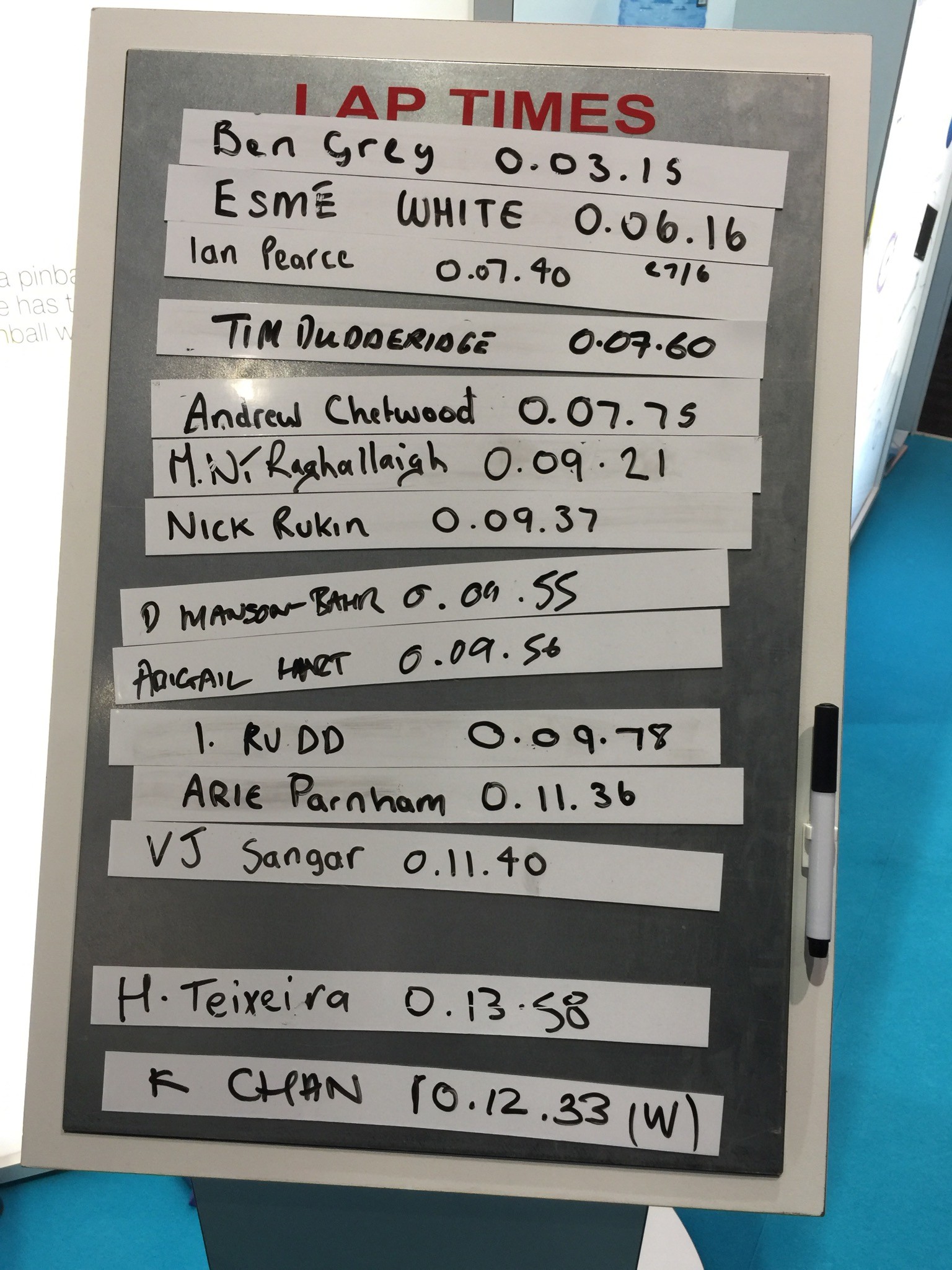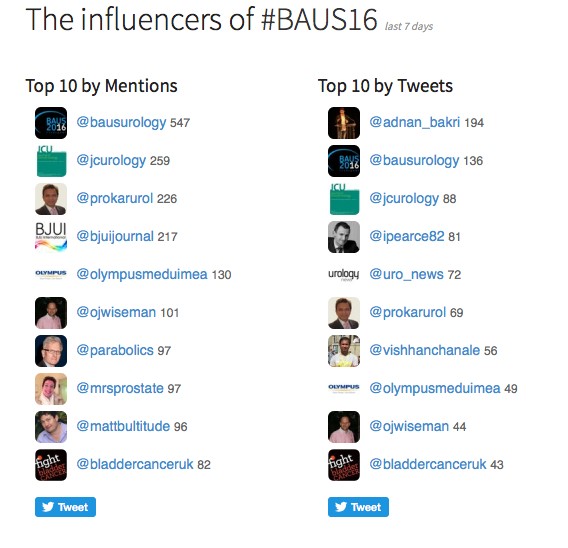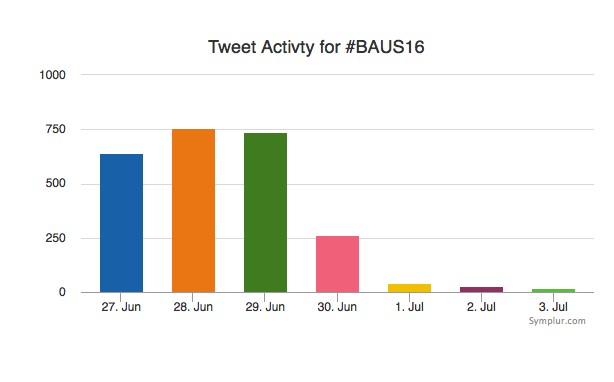Figure 1a. Initial testicular scintigraphy. Arrowhead indicates photon defect area in left testis with increased surrounding areas.
Then, as initial management, manual untwisting to the clockwise direction was tried at once in the outpatient setting, after which tenderness and left scrotal pain was abruptly decreased. Considering residual torsion concomitant with underline deformity in both scrotums, follow-up testicular scintigraphy and elective surgery were planned. Testicular scintiography taken the day after manual reduction revealed no interval change compared to the image recorded before manual reduction, regardless of improvement in symptom (Figure 1b).
Figure 1b. Follow-up testicular scintigraphy after manual detorsion on left testis. The photon defect area (arrowhead) showed no significant interval change compared with prior imaging.
Elective surgical exploration revealed 180º counterclockwise torsion of left testis with partial bell-clapper deformity, then bilateral orchiopexy was performed. Follow up imaging taken the day after surgical correction showed significant improvement in photon defect (Figure 1c).
Figure 1c. Follow up testicular scintigraphy taken the day after surgical correction showed significant decreased in photon defect area (arrowhead).
Case Report 2
A 23-year-old male presented to our emergency department complaining of abrupt development (11 hours previous) of left scrotal pain and swelling. Urinalysis revealed pyuria with 10-29 leukocytes in each high power field. US performed in the emergency setting showed decreased blood flow in left scrotum, with mildly enlarged epididymis. Under suspicion of testicular torsion, surgical exploration was performed 13 hours after the onset of pain. Testicular scintigraphy taken immediately before the operation confirmed a photon defect in left scrotum (Figure 2a).
Figure 2a. Initial testicular scintigraphy. The area for left scrotum showed no perfusion (arrowhead).
In the operative field, a 360º counterclockwise torsion was found. After untwisting of the testis and soaking in warm saline for 10 minutes, return of fresh color on surface of the tunica albuginea was observed, with fresh bleeding upon a tentative small incision (Figure 2b).
Figure 2b. At surgical exploration, return of normal color with fresh bleeding upon a tentative small incision was observed (arrowhead).
Based on these findings, bilateral orchiopexy was performed. However, the patient still complained of a similar degree of scrotal pain one day after the operation. A follow-up testicular scintigraphy was performed, which revealed a perfusion defect on the left testis (Figure 2c)
Figure 2c. Follow-up imaging after orchiopexy. While increased compared with prior imaging, the scintigraphy still showed obvious photon defect with increased surrounding areas (arrowhead).
In a following orchiectomy the day after the initial operation, necrosis of whole left testis was revealed (Figure 2d). An orchiectomy concomitant with prosthesis insertion was conducted.
Figure 2d. Final specimen revealed totally necrotic change of left testis.
Discussion
Acute scrotal pain remains the most important differential diagnosis requiring exclusion or prompt management among urologic emergencies, as missed or delayed diagnosis of testicular torsion can lead to organ loss, cosmetic deformity, and compromised fertility. Although testicular torsion in adulthood is thought to be relatively unusual in adults, it may occur at any age. An estimated 39% of all cases of torsion develop in adulthood [5], including men in the sixth and seventh decades of life. The primary goal in management of testicular torsion is testicular salvage, with the goal of maintaining fertility. To achieve this, there is approximately a 4-8 hour window from the onset of torsion symptoms until surgical intervention is required to save the affected testis. Delay in diagnosis and subsequent delay in surgery risk testicular viability, with nearly 80% of affected testes infarcted after 10 hours from the onset of pain, and after 24 hours nearly 100% are infarcted and non-salvageable [6].
Age has been suggested as a variable effect on testicular salvage rate. Comparison with younger counterparts revealed that the reported testicular salvage is generally poor in adulthood [1, 7]. This likely is due to a lack of recognition of the potential for adult torsion by physicians, as well as differences in the severity of spermatic cord twisting in adults versus children [4]. A recent examination of 2248 men diagnosed with testicular torsion using a multivariate model estimating the probability of orchiectomy showed that only age was significant variable [8]. In the study, the prevalence of testicular torsion was 19% among those aged 1-9 years, 33% among those aged 10-17 years, and 41% among those aged 18-25 years. For every year increase in age, the adjusted odds of having an orchiectomy increased by 1.08 (95% CI, 1.03-1.13), or an increase of 8% in the odds per year.
The exceeded prevalence of testicular torsion in adults with higher orchiectomy rate indicates the importance of maintaining a high index of suspicion in acute scrotum symptoms in adulthood. After an initial trial to salvage the testis, the outcome should be monitored with care, as shown in these cases. While manual untwisting may allow prompt reperfusion of the testis, the resolution of symptoms does not necessarily correlate with the presence or absence of persistent torsion, because the testis may still be twisted, although to a lesser degree [3, 4]. Hence, radiologic evaluation should accompany this maneuver to confirm satisfactory detorsion. In case of surgical exploration, attempts should be made to salvage the testis if there is any sign of reperfusion after detorsion [2]. However, we believe that successful return of normal blood flow should also be followed by radiologic evaluation postoperatively, due to absence of reliable objective criteria at time of surgical decision. Regarding radiologic modality for follow up imaging, we chose testicular scintigraphy instead of US, which was presently performed as an initial radiologic modality upon suspicion of testicular torsion, presuming this approach to be more accurate [9] and objective, regardless of operator skill [10]. Actually, the blood flow detected by US was maintained in case 1, but the scintigraphy revealed a definite photon defect. Particularity in a follow-up setting, it can be performed electively. In this context, serial testicular scintigraphy after initial salvage trial to obtain objective evidence of procedural outcome enables adequate surgical decision for failed salvage cases.
Conclusions
In case of acute scrotal pain in adult, the applications of serial radiologic evaluation using testicular scintigraphy not only increase accuracy in diagnosis of testicular torsion, but also provide reliability on the outcome of initial salvage trial, enabling correct surgical approach.
References
1. Jaison A, Mitra B, Cameron P, Sengupta S. Use of ultrasound and surgery in adults with acute scrotal pain. ANZ J Surg. 2011; 81: 366-70.
2. Julia S. Barthold. Abnormalities of the testis and scrotum and their surgical management; in Campbell-Walth Urology 10th edition. Editors Louise R. Kavoussi, Andrew C. Novick, Alan W. Partin, Craig A. Peters. Elsevier Sounders, 2011, Philadelphia, pp3590
3. Jefferson RH, Pérez LM, Joseph DB. Critical analysis of the clinical presentation of acute scrotum: a 9-year experience at a single institution. J Urol. 1997; 158 :1198-200.
4. Sessions AE, Rabinowitz R, Hulbert WC, Goldstein MM, Mevorach RA. Testicular torsion: direction, degree, duration and disinformation. J Urol. 2003; 169: 663-5.
5 Lee LM, Wright JE, McLoughlin MG. Testicular torsion in the adult. J Urol. 1983; 130: 93-4.
6. Davenport M. ABC of general surgery in children. Acute problems of the scrotum. BMJ. 1996; 312: 435-7.
7. Cummings JM, Boullier JA, Sekhon D, Bose K. Adult testicular torsion. J Urol. 2002; 167: 2109-10.
8. Mansbach JM, Forbes P, Peters C. Testicular torsion and risk factors for orchiectomy. Arch Pediatr Adolesc Med. 2005; 159: 1167-71.
9. Wu HC, Sun SS, Kao A, Chuang FJ, Lin CC, et al. Comparison of radionuclide imaging and ultrasonography in the differentiation of acute testicular torsion and inflammatory testicular disease. Clin Nucl Mel. 2002; 27: 490-3.
10. Ringdahl E, Teague L. Testicular torsion. Am Fam Physician. 2006; 74: 1739-43.
Date added to bjui.org: 15/07/2012
DOI: 10.1002/BJUIw-2011-128-web

